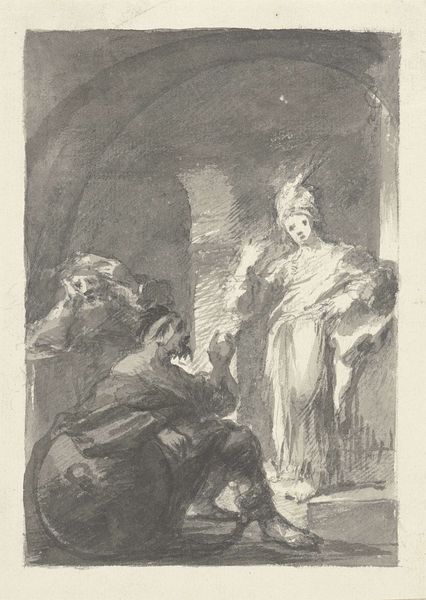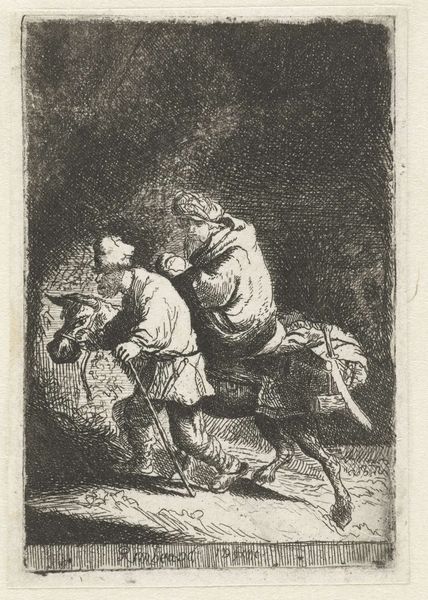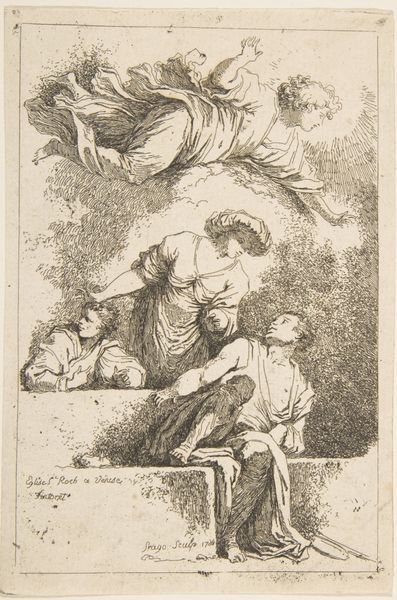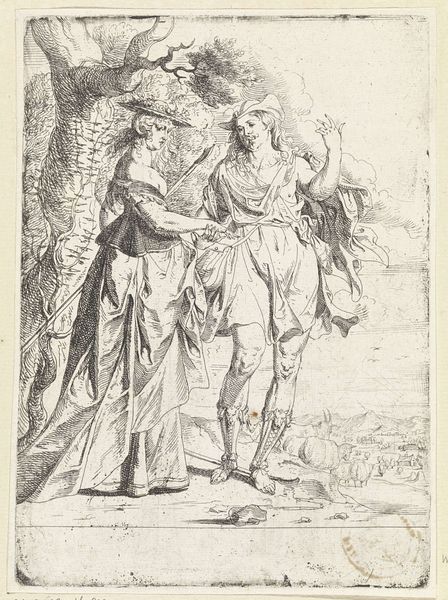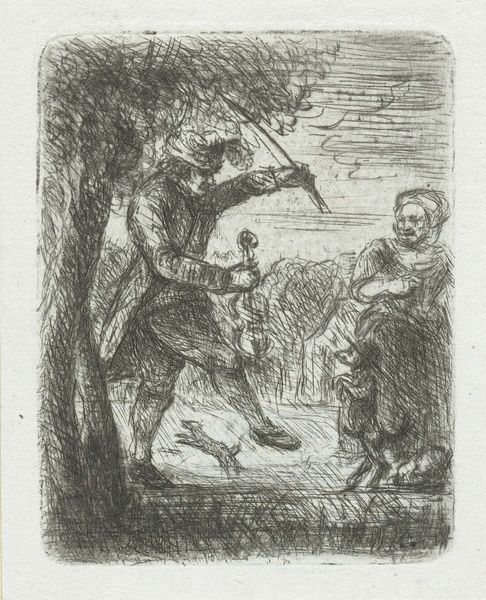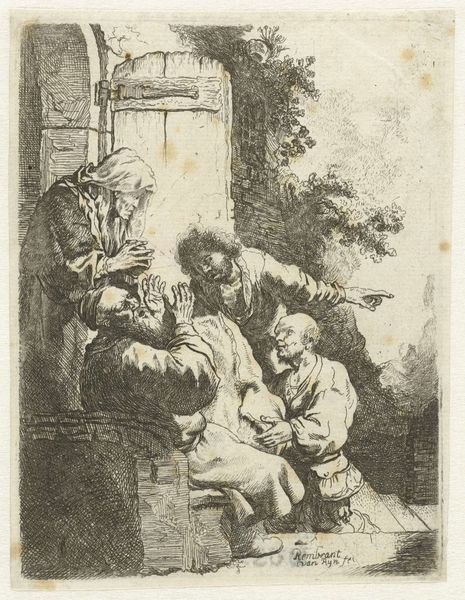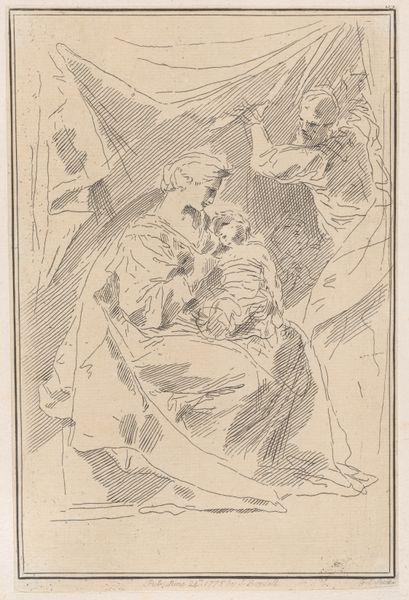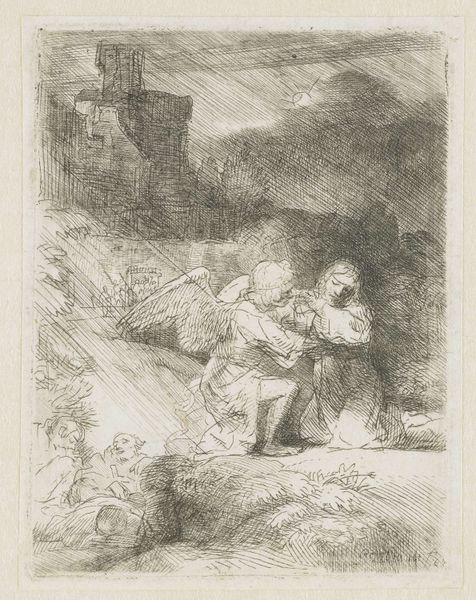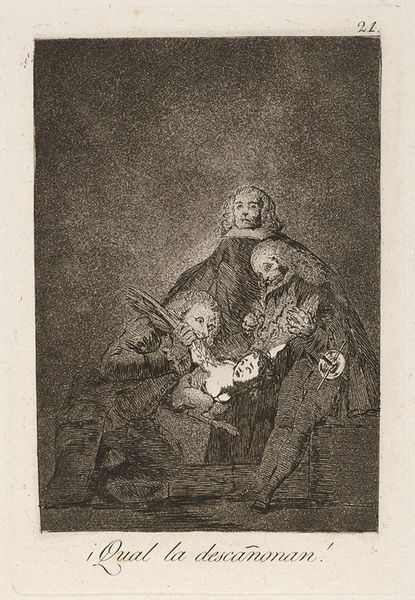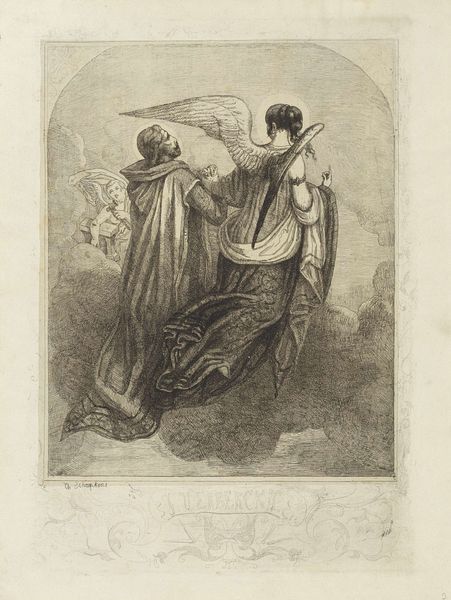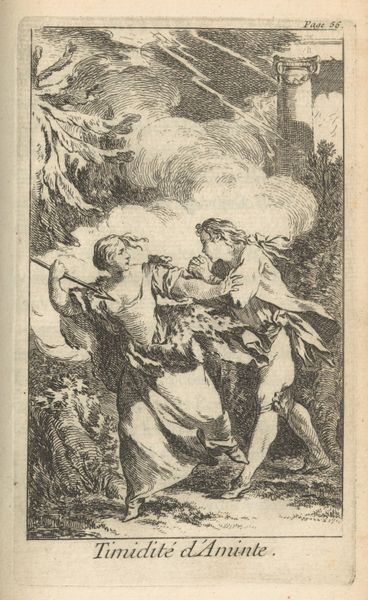
drawing, paper, graphite
#
drawing
#
baroque
#
pencil sketch
#
figuration
#
paper
#
graphite
#
history-painting
Dimensions: height 184 mm, width 132 mm
Copyright: Rijks Museum: Open Domain
Johann Georg Trautmann made this drawing, "God Appears to Abraham or Moses(?)," using brush and gray ink, sometime in the 18th century. Biblical scenes like this were pretty common at the time, but it's interesting to consider how institutions like the church and art academies shaped the way artists approached these subjects. Think about it: the church often commissioned artwork to teach religious stories, and art academies set standards for how these stories should be depicted. This drawing, with its dramatic lighting and emphasis on emotion, reflects those influences. To understand the image better, we might turn to religious texts, theological interpretations, and art history books. How do these sources inform our understanding of what Trautmann is trying to convey? And how did the social and institutional context of 18th-century Europe shape his vision?
Comments
No comments
Be the first to comment and join the conversation on the ultimate creative platform.
